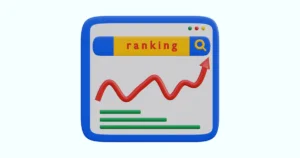If you’re wanting to learn SEO for a website, this is the perfect guide for you! In it, you will learn the basics and more about SEO.
1. Keyword Research
- Identify relevant keywords related to your website’s content, products, or services.
- Use keyword research tools like Google Keyword Planner, SEMrush, or Moz Keyword Explorer to find popular and relevant keywords with reasonable search volumes.
2. On-Page Optimization
- Optimize your website’s title tags, meta descriptions, headings, and URLs using the identified keywords.
- Ensure that your content is unique, relevant, and well-structured.
- Include the target keywords naturally within the content while maintaining readability.
- Optimize images by using descriptive file names and alt tags.
3. Technical SEO
- Make sure your website is crawlable by search engines.
- Create a sitemap.xml file and submit it to search engines like Google Search Console.
- Ensure your website has a clear and logical site structure with internal links.
- Improve website loading speed by optimizing images, enabling browser caching, and using a content delivery network (CDN).
4. Mobile Optimization
- Ensure your website is mobile-friendly and responsive.
- Use a mobile-responsive design that adapts to different screen sizes.
- Optimize your website’s loading speed for mobile devices.
5. Content Creation and Optimization
- Create high-quality, valuable, and engaging content regularly.
- Incorporate relevant keywords naturally into your content.
- Use header tags (H1, H2, etc.) to structure your content and make it more readable.
- Include internal and external links to provide additional value to readers.
6. Off-Page Optimization
- Build high-quality backlinks from reputable and relevant websites.
- Guest posting, influencer outreach, and social media promotion can help generate backlinks.
- Participate in industry forums and communities, and engage with your target audience.
- Encourage social sharing and promotion of your content.
7. User Experience and Engagement
- Focus on improving user experience on your website.
- Make sure your website is easy to navigate and user-friendly.
- Improve page load times to reduce bounce rates.
- Encourage user engagement through comments, social sharing, and calls to action.
8. Analytics and Monitoring
- Set up Google Analytics to track your website’s performance.
- Monitor your website’s rankings, organic traffic, and conversions.
- Make adjustments to your SEO strategy based on data and insights.
Conclusion
Remember that SEO is an ongoing process, and it takes time to see results. Keep monitoring and optimizing your website based on changes in search engine algorithms and user behavior.

